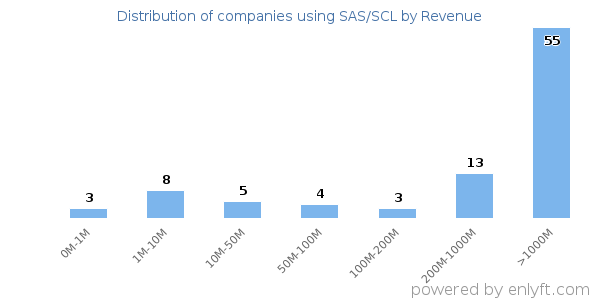Companies using SAS/SCL
We have data on 83 companies that use SAS/SCL. The companies using SAS/SCL are most often found in United States and in the Information Technology and Services industry. SAS/SCL is most often used by companies with >10000 employees and >1000M dollars in revenue. Our data for SAS/SCL usage goes back as far as 8 years and 9 months.
Who uses SAS/SCL?
| Company | Cognizant Technology Solutions Corp |
| Website | cognizant.com |
| Country | United States |
| Revenue | >1000M |
| Company Size | >10000 |
| Company | Infosys Ltd |
| Website | infosys.com |
| Country | India |
| Revenue | >1000M |
| Company Size | >10000 |
| Company | HP Development Company, L.P. |
| Website | hp.com |
| Country | United States |
| Revenue | >1000M |
| Company Size | >10000 |
| Company | Ernst & Young Global Limited |
| Website | ey.com |
| Country | United States |
| Revenue | >1000M |
| Company Size | >10000 |
| Company | FedEx Corporate Services, Inc |
| Website | fedex.com |
| Country | United States |
| Revenue | >1000M |
| Company Size | >10000 |
| Company | Website | Country | Revenue | Company Size |
|---|---|---|---|---|
| Cognizant Technology Solutions Corp | cognizant.com | United States | >1000M | >10000 |
| Infosys Ltd | infosys.com | India | >1000M | >10000 |
| HP Development Company, L.P. | hp.com | United States | >1000M | >10000 |
| Ernst & Young Global Limited | ey.com | United States | >1000M | >10000 |
| FedEx Corporate Services, Inc | fedex.com | United States | >1000M | >10000 |
Target SAS/SCL customers to accomplish your sales and marketing goals.
SAS/SCL Market Share and Competitors in Programming Languages
We use the best indexing techniques combined with advanced data science to monitor the market share of over 15,000 technology products, including Programming Languages. By scanning billions of public documents, we are able to collect deep insights on every company, with over 100 data fields per company at an average. In the Programming Languages category, SAS/SCL has a market share of about 0.1%. Other major and competing products in this category include:
Programming Languages
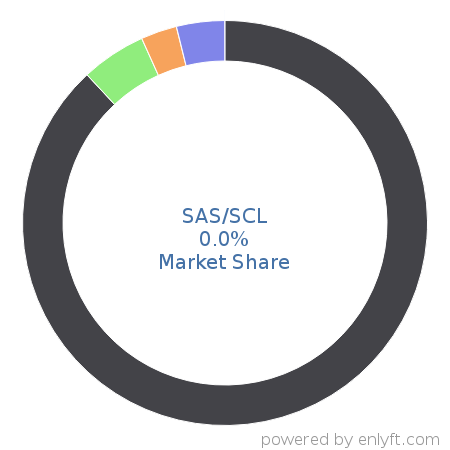

What is SAS/SCL?
SAS Component Language (SCL) is a programming language designed to facilitate the development of interactive applications using the SAS System. One can use SCL with other SAS software to create data entry applications, to display tables and menus, and to generate and submit SAS source code. SCL is the scripting language behind SAS/AF, SAS/FSP, and SAS/EIS software.
Top Industries that use SAS/SCL
Looking at SAS/SCL customers by industry, we find that Information Technology and Services (16%) and Financial Services (12%) are the largest segments.
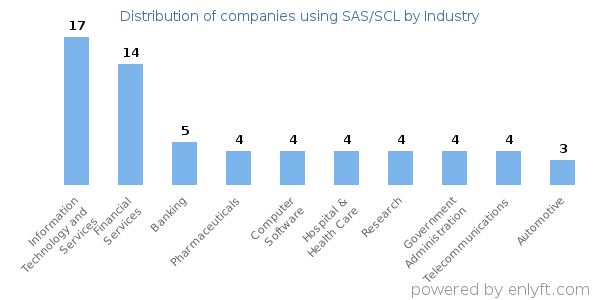
Top Countries that use SAS/SCL
63% of SAS/SCL customers are in United States and 7% are in United Kingdom.
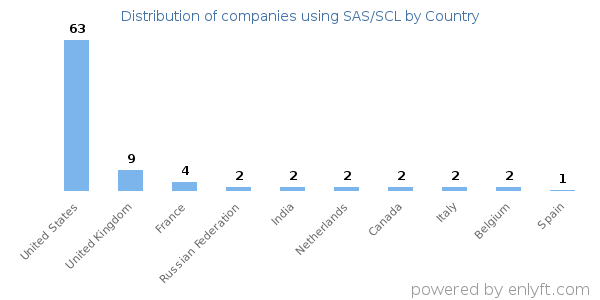
Distribution of companies that use SAS/SCL based on company size (Employees)
Of all the customers that are using SAS/SCL, a majority (64%) are large (>1000 employees), 10% are small (<50 employees) and 17% are medium-sized.
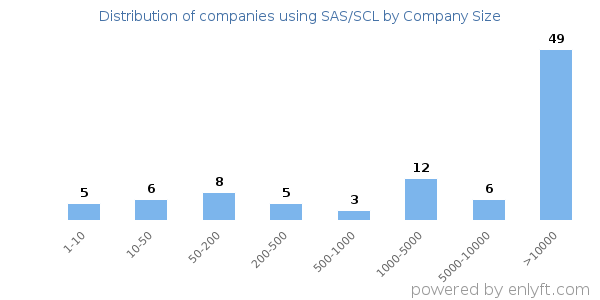
Distribution of companies that use SAS/SCL based on company size (Revenue)
Of all the customers that are using SAS/SCL, a majority (69%) are large (>$1000M), 14% are small (<$50M) and 0% are medium-sized.
